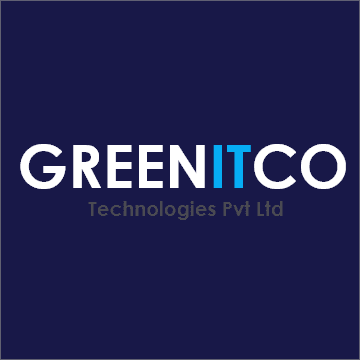
In today’s digital business landscape, organizations must efficiently manage IT resources and ensure seamless service delivery. IT Asset Management (ITAM) and IT Service Management (ITSM) are two essential frameworks, but they focus on different aspects of IT operations. While ITAM is concerned with managing IT assets throughout their lifecycle, ITSM emphasizes delivering IT services that meet business needs. Understanding the key differences between ITAM and ITSM can help businesses maximize efficiency and optimize their IT infrastructure.
In this article, we will explore the key differences between ITAM and ITSM and highlight why both are essential for a successful IT strategy.
1. Core Definition: What Are ITAM and ITSM?
IT Asset Management (ITAM):
ITAM (IT Asset Management) involves tracking, monitoring, and managing IT assets throughout their lifecycle. These assets include hardware (e.g., laptops, servers, printers), software, and other digital tools used by the organization. The primary goal of ITAM is to optimize asset utilization, ensure proper maintenance, and replace assets as needed to maximize return on investment (ROI) and minimize risks.
IT Service Management (ITSM):
ITSM focuses on the delivery and management of IT services that support an organization’s operations. It covers the entire service lifecycle, from planning and design to delivery, support, and improvement. ITSM aligns IT services with business goals and ensures customer-centric service delivery. A well-known ITSM framework is ITIL (Information Technology Infrastructure Library), which offers best practices for IT service management.
2. Purpose and Focus
Purpose of ITAM:
The goal of ITAM is to manage IT assets throughout their lifecycle to ensure optimal usage, compliance, and cost-efficiency. ITAM tracks everything from procurement and deployment to maintenance and disposal, supporting decision-making and reducing risks related to non-compliance or asset downtime.
Key Areas of Focus in ITAM:
- Hardware lifecycle management
- Software licensing and compliance
- Vendor management
- Cost optimization
Purpose of ITSM:
The goal of ITSM is to deliver IT services that meet the organization’s needs. It focuses on providing efficient, reliable services, minimizing downtime, and improving user satisfaction. ITSM also helps manage incidents, requests, problems, and changes, ensuring continuous service improvements.
Key Areas of Focus in ITSM:
- Incident management
- Problem management
- Change management
- Service request fulfilment
3. Process Lifecycle
ITAM Lifecycle:
ITAM follows a structured approach to asset management, typically broken down into the following stages:
- Acquisition: Procuring assets based on business needs, budget, and vendor relations.
- Deployment: Installing and configuring assets for use within the organization.
- Utilization: Tracking asset usage and monitoring wear and tear to ensure efficiency.
- Maintenance: Performing regular updates, repairs, and servicing to prolong asset life.
- Disposal: Safely retiring or recycling assets at the end of their useful life to ensure compliance.
ITSM Lifecycle:
The ITSM lifecycle aligns IT services with business objectives through the following stages:
- Service Strategy: Defining service goals and aligning them with business needs.
- Service Design: Creating new or modified services, including infrastructure and policies.
- Service Transition: Deploying services or updates while managing risks to minimize disruption.
- Service Operation: Managing daily operations, including handling incidents and service requests.
- Continual Service Improvement (CSI): Ongoing evaluation and improvement of services.
4. Tools and Technologies
ITAM Tools:
ITAM solutions offer detailed tracking and reporting of IT assets, helping organizations manage hardware and software lifecycles, monitor compliance, and optimize costs.
Common Features of ITAM Tools:
- Asset discovery and inventory tracking
- Software license management
- Vendor and contract management
- Lifecycle management for hardware and software
ITSM Tools:
ITSM tools facilitate the delivery and management of IT services by providing workflows and automation for handling incidents, service requests, and changes.
Common Features of ITSM Tools:
- Incident and request management
- Change and configuration management
- Knowledge management and self-service portals
- Reporting and analytics for service performance

5. Value to the Business
Business Value of ITAM:
ITAM provides better visibility and control over IT assets, ensuring organizations maximize their investments and reduce risks such as software non-compliance or underutilized resources. ITAM also helps lower costs by eliminating unnecessary purchases and improving governance through accurate asset tracking.
Key Benefits of ITAM:
- Cost savings through asset optimization
- Improved software license compliance
- Reduced asset downtime and failure risks
- Enhanced vendor and contract management
Business Value of ITSM:
ITSM ensures IT services align with business objectives and stakeholder expectations. It helps improve service delivery, reduce downtime, and enhance the user experience, ultimately increasing productivity across the organization.
Key Benefits of ITSM:
- Improved user satisfaction and productivity
- Higher service availability and performance
- Faster incident resolution and reduced downtime
- Better alignment of IT services with business goals
6. Overlap Between ITAM and ITSM
While ITAM and ITSM serve distinct purposes, they intersect in several areas. For instance, ITSM relies on ITAM data to manage incidents and problems more efficiently. Accurate asset data from ITAM enables ITSM teams to resolve issues faster by providing insights into asset configurations, usage, and status. Similarly, ITAM benefits from ITSM’s change management processes, ensuring that changes to IT assets are properly tracked and controlled.
Integrating ITAM and ITSM fosters better asset tracking, more accurate incident resolution, and greater control over the IT environment.
Conclusion
Both ITAM and ITSM play critical roles in maintaining a smooth and efficient IT infrastructure. ITAM focuses on optimizing asset usage, ensuring compliance, and managing costs, while ITSM centres on delivering high-quality services that meet business needs.
Incorporating both frameworks into an IT strategy enables organizations to optimize investments, reduce costs, improve service delivery, and enhance the user experience. Using integrated ITAM and ITSM tools provides real-time data and promotes seamless collaboration between teams.
By understanding the key differences between ITAM and ITSM, businesses can make informed decisions and unlock the full potential of their IT resources.



